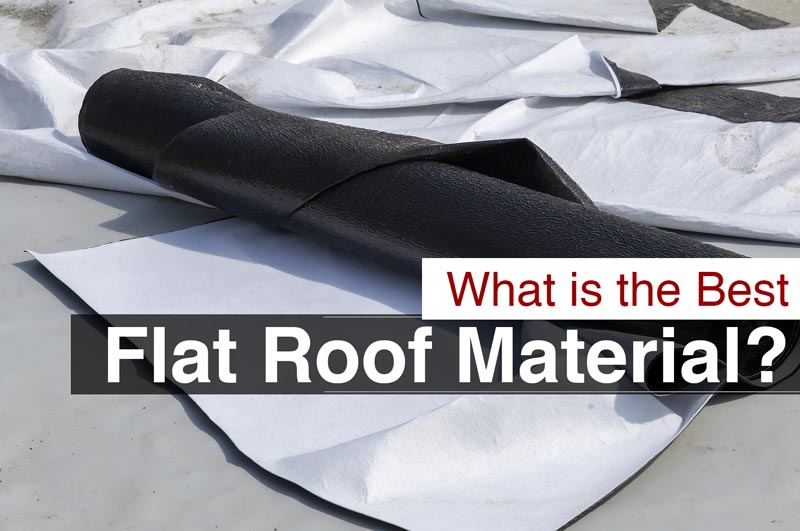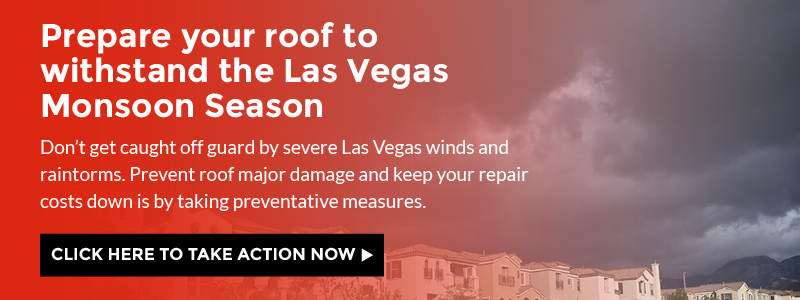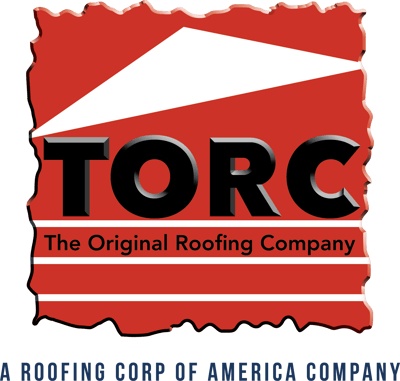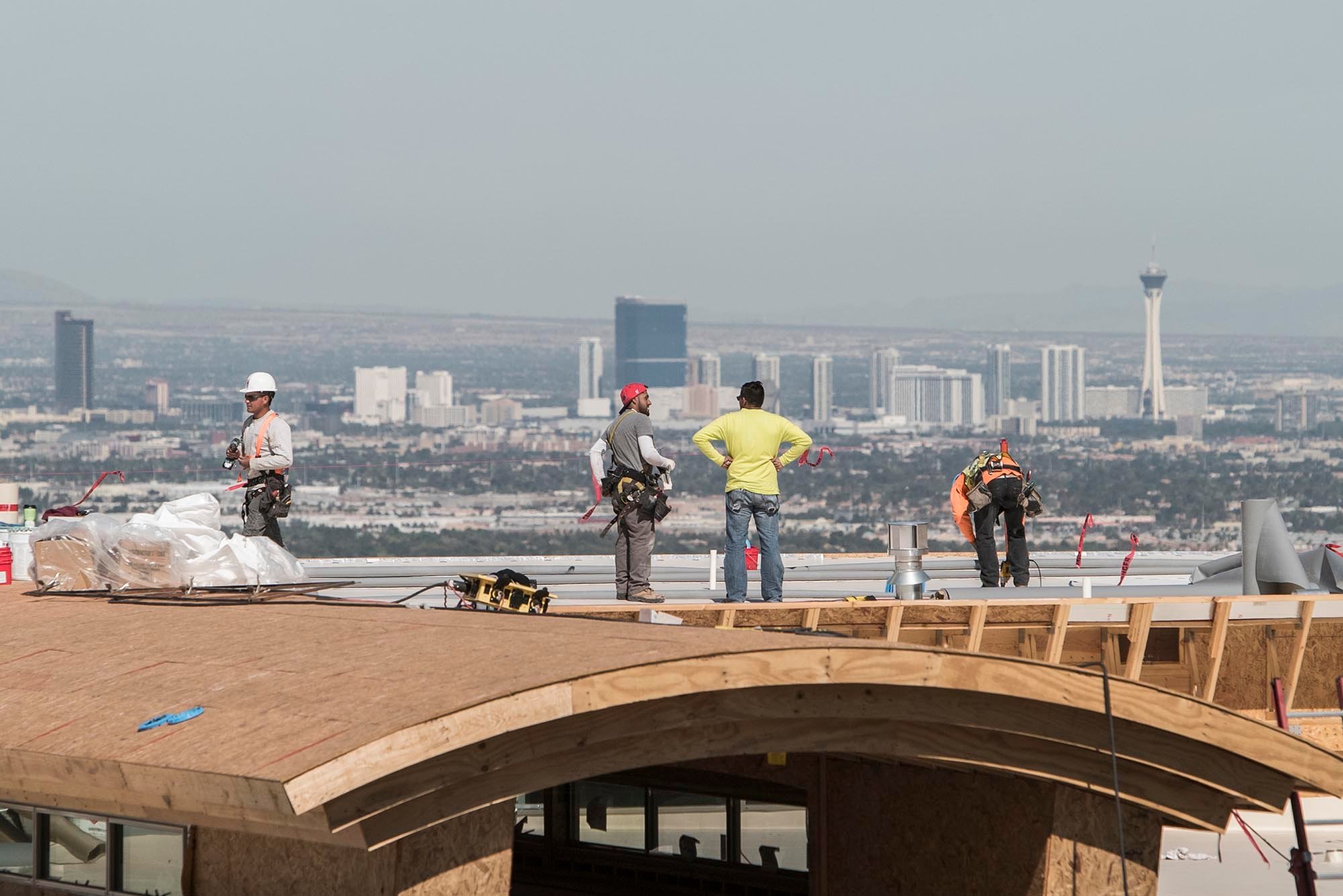 While it’s never fun to have to replace a building’s roof, one can choose to look at the task as an opportunity, rather than a chore. This is your opportunity to make an indelible change on the building, to really leave a mark. The decision you make will affect factors ranging from the longevity of the new roof to the energy cost savings moving into the future.
While it’s never fun to have to replace a building’s roof, one can choose to look at the task as an opportunity, rather than a chore. This is your opportunity to make an indelible change on the building, to really leave a mark. The decision you make will affect factors ranging from the longevity of the new roof to the energy cost savings moving into the future.
 What Is the Best Flat Roof Material for Commercial Roofs?
What Is the Best Flat Roof Material for Commercial Roofs?
There are a wide variety of possible roofing materials, each of which possessing of its own advantages and disadvantages. Below, we have prepared a brief examination of the most common:
PVC
PVC is highly regarded within the field, and is one of the leading choices for most commercial roofing projects. A recyclable material which lasts 30 years on average, PVC is renowned for its durability.
PVC is installed via a heat-welded method, which results in a very secure installation that is very resistant to damage. It is possible for PVC to shrink over time, through, which can cause leaks.
One drawback of PVC is that it can be difficult to repair, and cold weather can cause older roofs to shatter or puncture, although that is less concerning in warmer climates.
SPF
SPF is a type of sprayable foam material which is very sustainable, and in fact can eventually pay for itself in energy savings. It is theorized to be the longest lasting of the commonly used roofing materials presented on this list, with a proposed lifespan of up to 40 years with proper maintenance along the way.
SPF acts as insulation, enhances structural support, and can be used to correct problems with ponding water. SPF, however, is admittedly very difficult and expensive to remove, and also is very challenging to install, as it requires specialized training and mastery of the material.
TPO
This material, as well as the next on the list, is relatively new and experimental. Currently, its expected lifespan ranges between 7-20 years. As with PVC, it is a recyclable material, and as with PVC, it is installed with a heat-welded technique.
TPO is inexpensive to install, and does reflect some sunlight. One of the most significant problems with TPO is that the quality of the material is not standardized and varies wildly from manufacturer to manufacturer.
Additionally, the top layer is laminated, which can cause shrinkage problems, cracking, and other problems. Perhaps most significantly, TPO is not fire resistant, which can cause severe dangers if extra fireproofing is not applied.
Acrylic
Acrylic is a new material and involves many layers: a primer, a base coat, a fabric layer, followed by more base coat, and then a final coat on top of that. With maintenance, acrylic roofs can last a long time, and can be extended even further by adding a new top coat near the end of its nature lifespan.
Acrylic is also very durable, and can withstand blows from heavy hail. At the same time, acrylic is currently weak to weathering, especially ponding water, so if the roof you’re considering acrylic for has any sloping issues, you may wish to look elsewhere.
Acrylic is, however, UV resistant, reflective, and is easy to work with and repair.
EPDM
EPDM is also more commonly known as rubber roofing. It is a cheap material, but it suffers from not being aesthetically pleasing due to its flat black color and resemblance to an inner tube’s texture.
Its black color also causes problems with heat absorption, and can significantly raise air conditioning costs for buildings in hotter climates. Lighter colors of EPDM are produced, but come at a steep cost increase of nearly 30%.
EPDM also has the additional drawbacks of being weak to puncturing due to hail damage and the like, and the adhesive bonding used to connect its seams wears out over time and can become prone to leaking. Additionally, it is not recyclable.
Asphalt
Rolled asphalt is the old standby, but has severe drawbacks such as a very short lifespan, a lack of energy efficiency or recyclability, and can quickly develop problems where seams on the rolls meet.
Flat Roof Materials: Prices Comparison
According to roofcalc.org, the average cost to replace a flat roof on a 1,500 sq.ft. home ranges from $8,000-11,000, depending on the material you use and the complexity of installation.
Using online pricing data, we determined the following rough estimates for each material listed above, for a 40 foot by 40 foot square flat roof.
These prices are based upon the national average – some regions may see different trends.
- PVC: $10,599 on the low end ranging to $14,913 on the high end.
- SPF: $8,320 on the low end ranging to $9,440 on the high end.
- TPO: $9,319 on the low end ranging to $13,112 on the high end.
- Acrylic: Average of $9,600, based on a $6 per sq. ft. cost.
- EPDM: $8769 on the low end ranging to $12338 on the high end.
- Asphalt: Average of $3,200, based on a $2 per sq. ft. cost.
Hopefully this examination has helped you draw some conclusions about what material you want to use for your next roofing project. It is a decision which will have consequences stretching decades into the future, and while there is no real “right” answer, the decision bears much consideration.




